Is It Time to Shut the Door on Open-Concept Living?
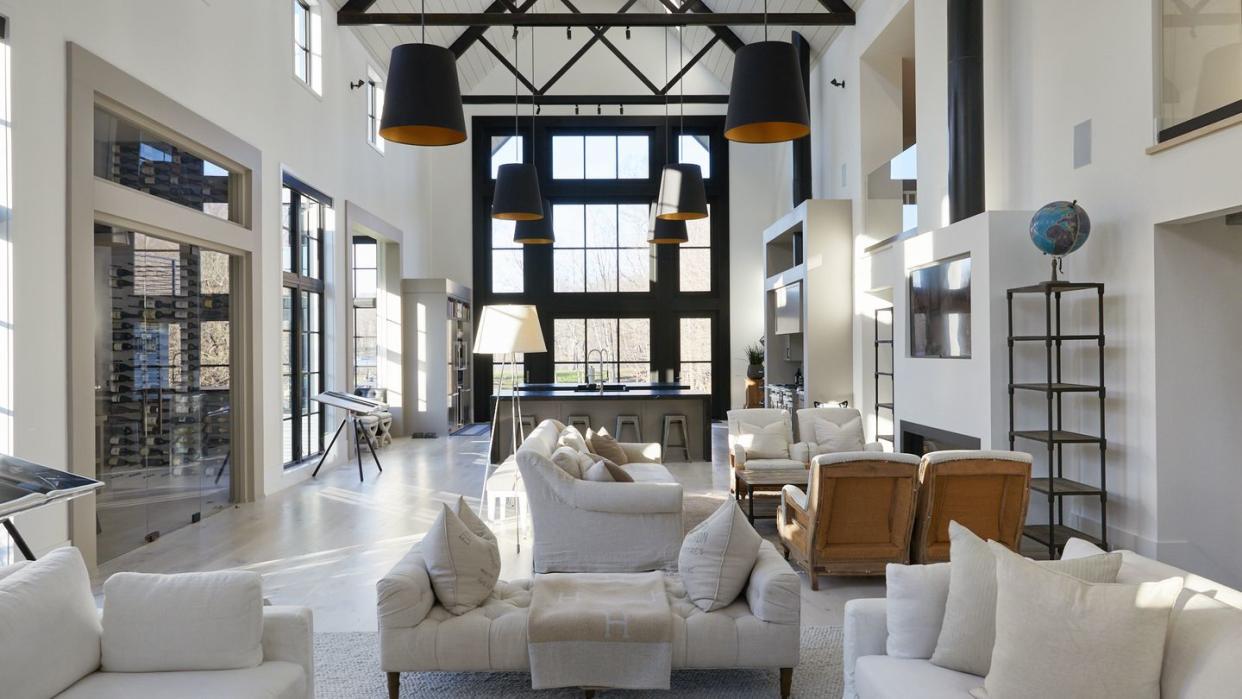
"Hearst Magazines and Yahoo may earn commission or revenue on some items through these links."
Every year, House Beautiful selects a group of talented up-and-coming designers that we lovingly refer to as the Next Wave. In the process of getting to know some of our Next Wave folks, we asked them a few simple questions, one of which earned some surprising replies. In response to "What current design trend are you ready to stop seeing?", more than one of the designers revealed that they're over open-concept spaces. Nashville, Tennessee-based Brad Ramsey says, "I am ready for a break from the trend of homes having one large open room that functions as the living, dining, and sitting rooms, in addition to the kitchen and breakfast nook. I can appreciate the desire to be together, but this kind of design removes a lot of the character and intimacy of a home."
He wasn't the only up-and-comer ready to close the book on open concept. "I miss closed-concept living. I like how older homes are more compartmentalized with defined spaces," Atlanta, Georgia-based Jerel Lake agrees. "I don't personally like the idea of doing dishes in the same room as my dining area."
Are these two Next Wavers right? Is the biggest design trend of the last decade really waning? Has the era of open-concept living come to a close? We decided to do some digging to find out for sure.
An Argument for Closing Down Open-Concept Living
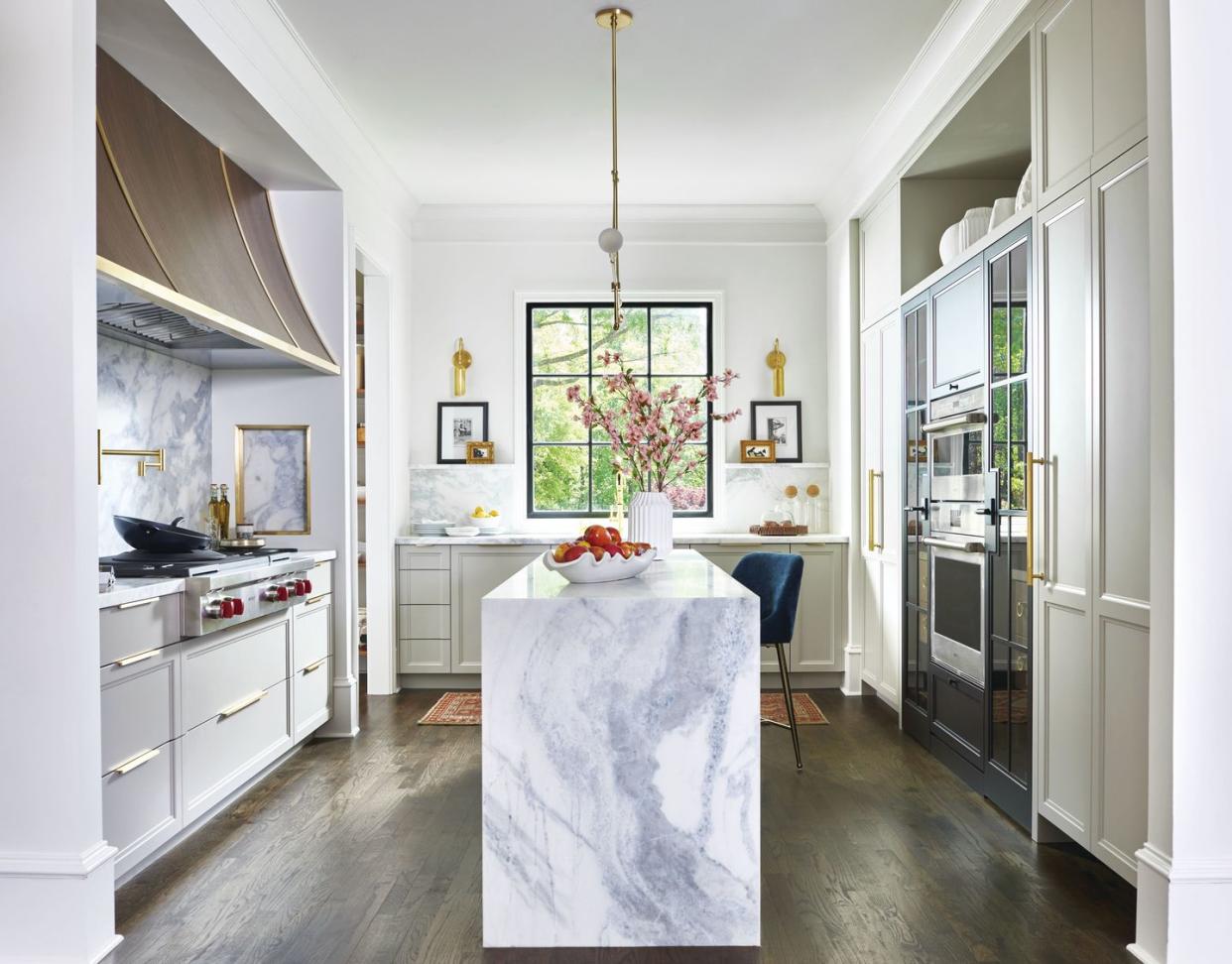
As with any controversy, first, we need to define our terms. "I would define a true open-concept floor plan as a relatively large interior with very few dividing walls or private spaces," says Ramsey. "It often includes the kitchen, dining, and living rooms all located in one large space." Why does he prefer the intimacy of closed-off rooms? "I am not totally anti-open-concept," he clarifies. "I just think it often neuters a space of its character and coziness when it is done wrong." His solution? Do it right, when desired. "We frequently design open-concept depending on clients' wants and needs, but I am always intentionally looking for ways to create more intimate and connective moments within the larger layout," he explains.
Ramsey insists he is pro-togetherness when it comes to enjoying quality time with loved ones. But he feels that closed-concept spaces offer a home a touch more freedom than open-concept layouts because you have more room to get creative. "I liken it to a person's wardrobe: Though much of it will coordinate and complement, no one wants to wear the same thing every day. Sometimes we want to be cozy and comfortable, sometimes we want to dress up a bit and feel hot, and sometimes we want a splash of color," Ramsey explains. "All of those looks represent the full human expression. We can find these moments throughout a home when it is more segmented and still has a thoughtful, cohesive design. The main family room might be the cozy, the front sitting room might be the hot, and the powder room might be the jewel box splash of color." We couldn't have said it better ourselves.
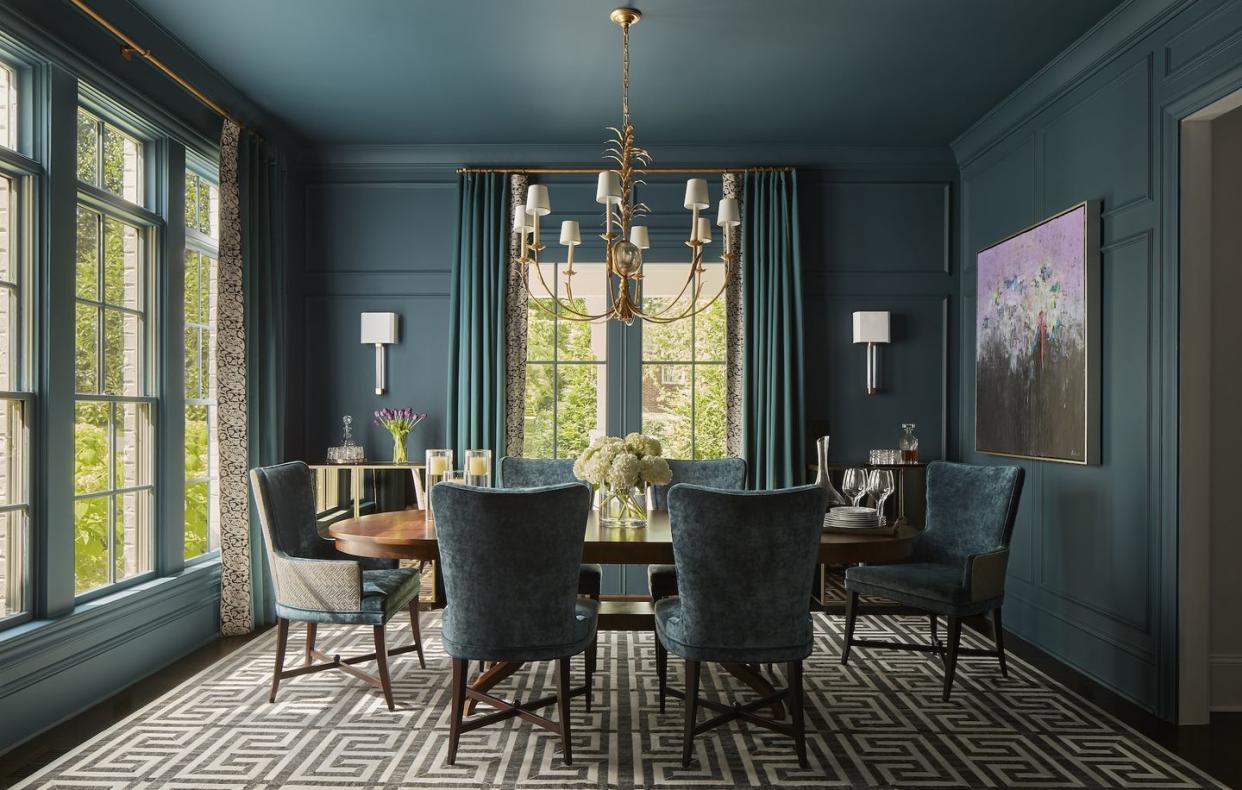
From a lifestyle perspective, separate rooms give inhabitants different environments to match their mood or activity. From a design perspective, the benefit of each room having its own four walls is the freedom to experiment with color, texture, and pattern without having to worry about whether or not it will pair well with the room next to it. As Lake puts it, "In a closed concept, you are able to create vignettes that are completely independent of one another. The kitchen, for instance, can be a rich wood veneer with moody finishes, while the living room incorporates a light and fresh palate. Ultimately, having options and flexibility is important in my view."
That flexibility doesn't just aid in choosing finishes and color palettes; it also lets homeowners enjoy their space differently. And Lake insists that it actually promotes togetherness. "Closed-concept living promotes more focused time and engagement with family and friends by reducing the amount of distractions seen with open-style living," he says.
Reasons to Open Your Mind to Open-Concept Living
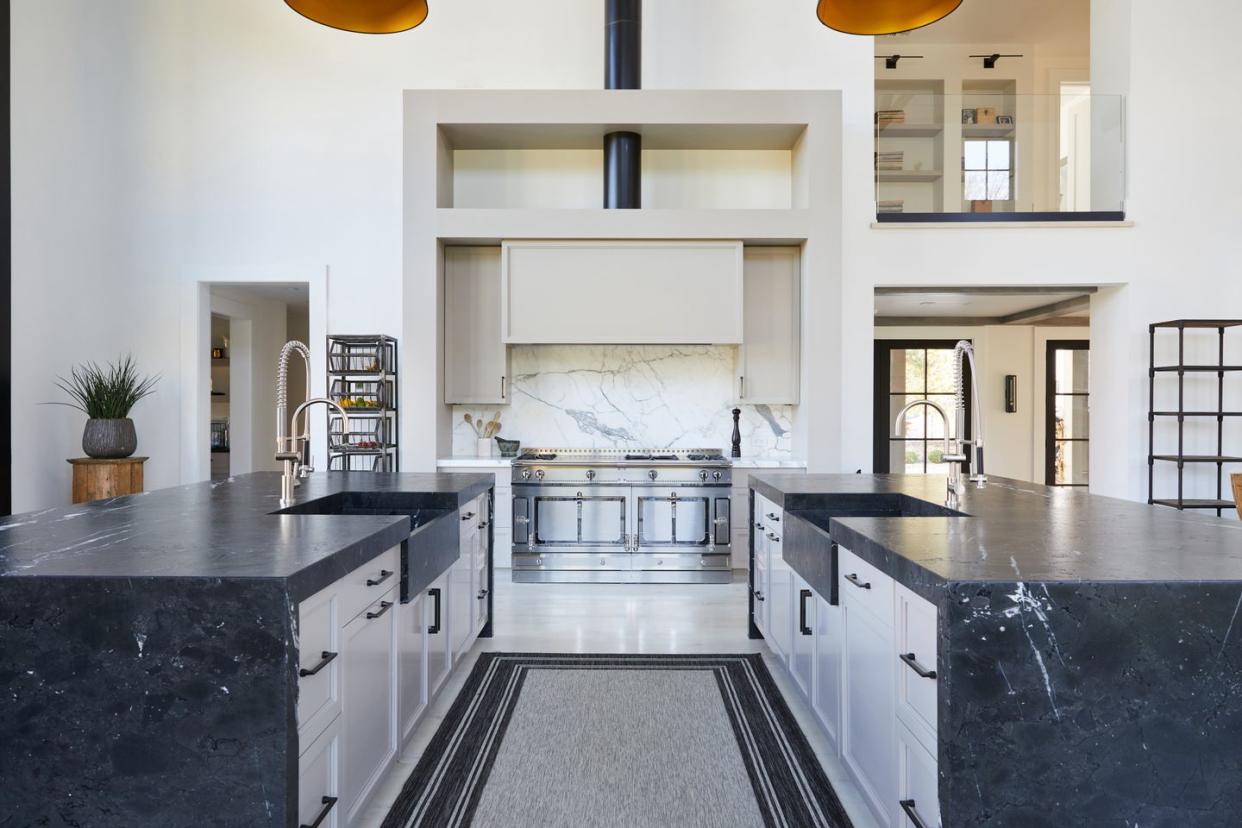
While Ramsey and Lake make good points, some of their peers would beg to differ, arguing that open-concept spaces are the way to go—at least some of the time. "I think there are definitely spaces where an open-concept layout is the best fit," says Los Angeles, California-based designer Amber Lewis. "For example, if you really love to entertain but don't want everyone on top of each other in one smaller room."
Of course, whether or not you're going to blast out the walls and embrace an open-concept layout depends on your style and the space itself. New Canaan, Connecticut-based Vince Falotico, managing partner of Brooks & Falotico, says, "I'm pro open concept if it's right for the client's lifestyle and is executed well. For example, if a property has a beautiful view, an open layout allows you to see it from as many spaces and vantage points as possible. It's also a great way to let light flow through a home."
Open concept layouts aren't just an aesthetic choice to make a room look and feel bigger. There are also a lot of practical benefits, including maximizing the amount of natural light that floods into the space and keeping the exterior views seamless (as opposed to breaking it up with walls).
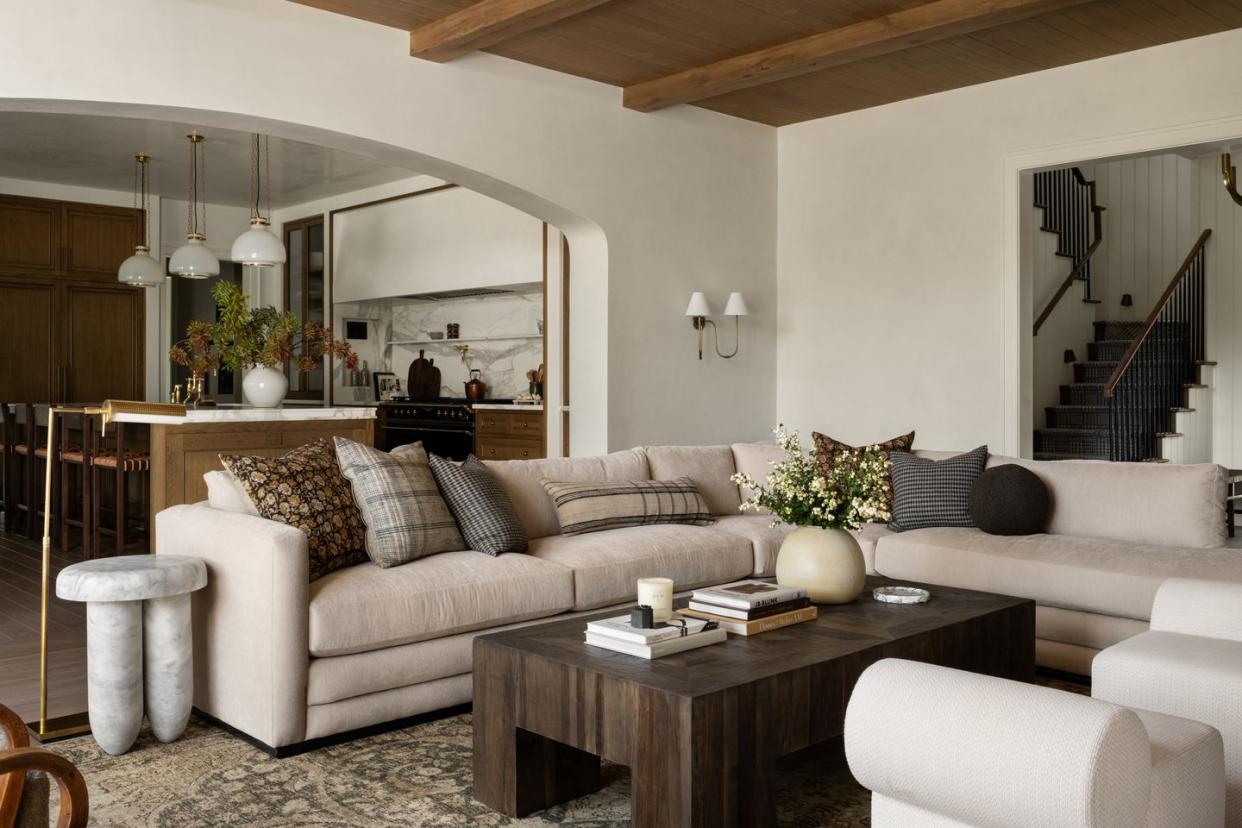
Salt Lake City, Utah-based Shea McGee holds a more neutral view when it comes to open-concept living. She lets her clients decide what they want to do, but does feel that such layouts come with benefits. "The great thing about an open concept floor plan is the openness you have with the rest of the home and whoever lives in it with you," she notes. "A lot of clients gravitate toward an open-concept space when they have families or are big entertainers. Essentially, you can watch TV, keep an eye on the kids, and cook dinner all at the same time, which, as a mother, I know is a valuable style of design."
The Verdict: To Open or to Close?
Though each designer has their own feelings about whether or not open-concept layouts should stay or go, all agreed that the choice ultimately rests with the homeowners. Falotico explains, "It really is a question of lifestyle: Do you have children? Do you host often, and is your style of entertaining casual or more formal?" He notes that, "It's becoming more common to have an open staircase from the first floor to a lower level, and the basement is where the fun, noisy stuff happens." Falotico points out that if you plan on making a specific level of your house the "noisy," anything-goes area, you can enjoy both open- and closed-concept spaces within your home.
That's a happy compromise. But if you want to choose one or the other, and can't decide which style speaks to you more, consider the question of timelessness. Closed-concept spaces have prevailed for centuries, and open-concept spaces are relatively new to the scene. Which will prevail? That remains to be seen, but if you like the look and feel of a more classic build, you can't go wrong by giving each space—the kitchen, living room, and dining area—its own designated room. It's a design choice that has managed to transcend space, time, and style, finding its way into some of the world's most beautiful homes.
Follow House Beautiful on Instagram and TikTok.
You Might Also Like
